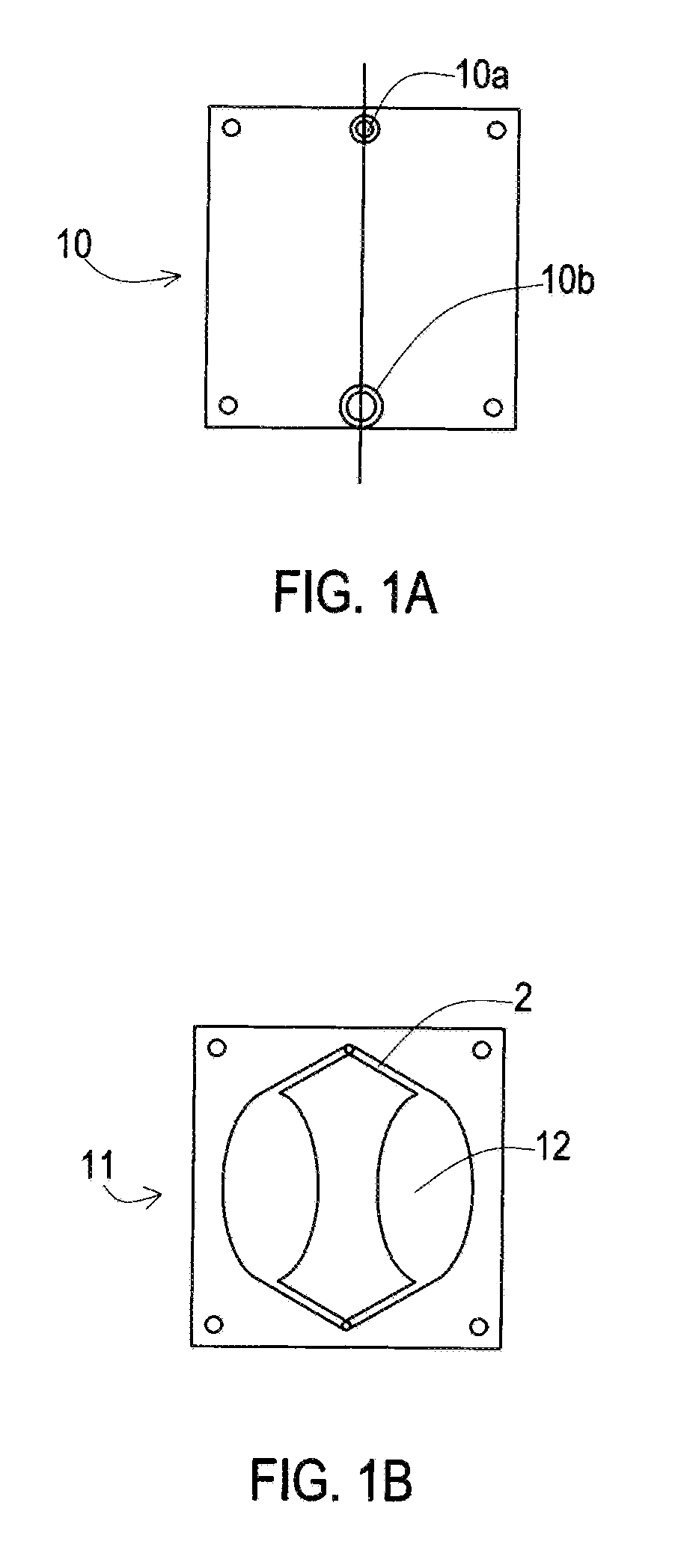Interconnecting Microfluidic Package, Fabrication Method and Methods of Use
a technology of microfluidic packaging and fabrication methods, applied in the direction of fluid pressure measurement, liquid/fluent solid measurement, peptides, etc., can solve the problems of inability to meet the needs of major improvements, lack of general, simple and effective packaging techniques, and limited specific applications, etc., to achieve reliable and inexpensive microfluidic packaging
- Summary
- Abstract
- Description
- Claims
- Application Information
AI Technical Summary
Benefits of technology
Problems solved by technology
Method used
Image
Examples
example 1
Chlorine Sensor
[0095]Sensor Design—Using a cost-effective rugged cyclic olefin copolymer (COC) substrate, two layers are designed; a sensor electrode layer and a fluidic layer. For a chlorine sensor, gold (Au), gold (Au) and silver / silver chloride (Ag / AgCl) comprise working, counter and reference electrodes respectively. For a temperature sensor, a meander-type gold (Au) resistor of 1 square millimeter (mm2) was designed. The temperature sensor was included to monitor the sample water temperature and to take into account any thermal effect on the chlorine concentration. The electrode structure and dimensions are shown in FIG. 9. A concentric three electrode design is shown wherein; the outermost curved electrode is the counter electrode (CE) 90 made of a strip of gold (Au) 200 micrometers (μm) in width. The curved working electrode (WE) 92 is spaced 200 μm inside the counter electrode (CE) 90 and is made of a strip of gold (Au) 400 μm in width. The reference electrode (RE) 94 made o...
example 2
Disposable BOD Microsensor
[0106]Sensor Design—As in Example 1, Cyclic Olefin Copolymer (COC) was used as the sensor substrate as well as the material to create the microfluidic layer. It is a rugged, transparent polymer with inertness towards chemicals like acetone, unlike many other plastic materials. Use of the cost-effective COC and batch fabrication techniques allow these sensors to be disposable.
[0107]The BOD sensor 200 consists of 3 layers stacked one above the other as shown in FIG. 21. A bottom electrode layer 220 comprising 2 sets of sensor electrodes222, 223 and one set of temperature sensors 224, 225 are covered with dissolved oxygen selective membrane (not shown). An intermediate microbial layer 226 of yeast T. Cutaneum immobilized on one set of sensor electrodes 222. Microbial stains and sensor structure are very important in the design. Some examples of well-known microbial strains are Rhodococus Erythropolis, Issatchenkia Orientalis and Trichosporon Cutaneum, the cult...
PUM
| Property | Measurement | Unit |
|---|---|---|
| response time | aaaaa | aaaaa |
| diameter | aaaaa | aaaaa |
| width | aaaaa | aaaaa |
Abstract
Description
Claims
Application Information
 Login to View More
Login to View More - R&D
- Intellectual Property
- Life Sciences
- Materials
- Tech Scout
- Unparalleled Data Quality
- Higher Quality Content
- 60% Fewer Hallucinations
Browse by: Latest US Patents, China's latest patents, Technical Efficacy Thesaurus, Application Domain, Technology Topic, Popular Technical Reports.
© 2025 PatSnap. All rights reserved.Legal|Privacy policy|Modern Slavery Act Transparency Statement|Sitemap|About US| Contact US: help@patsnap.com



